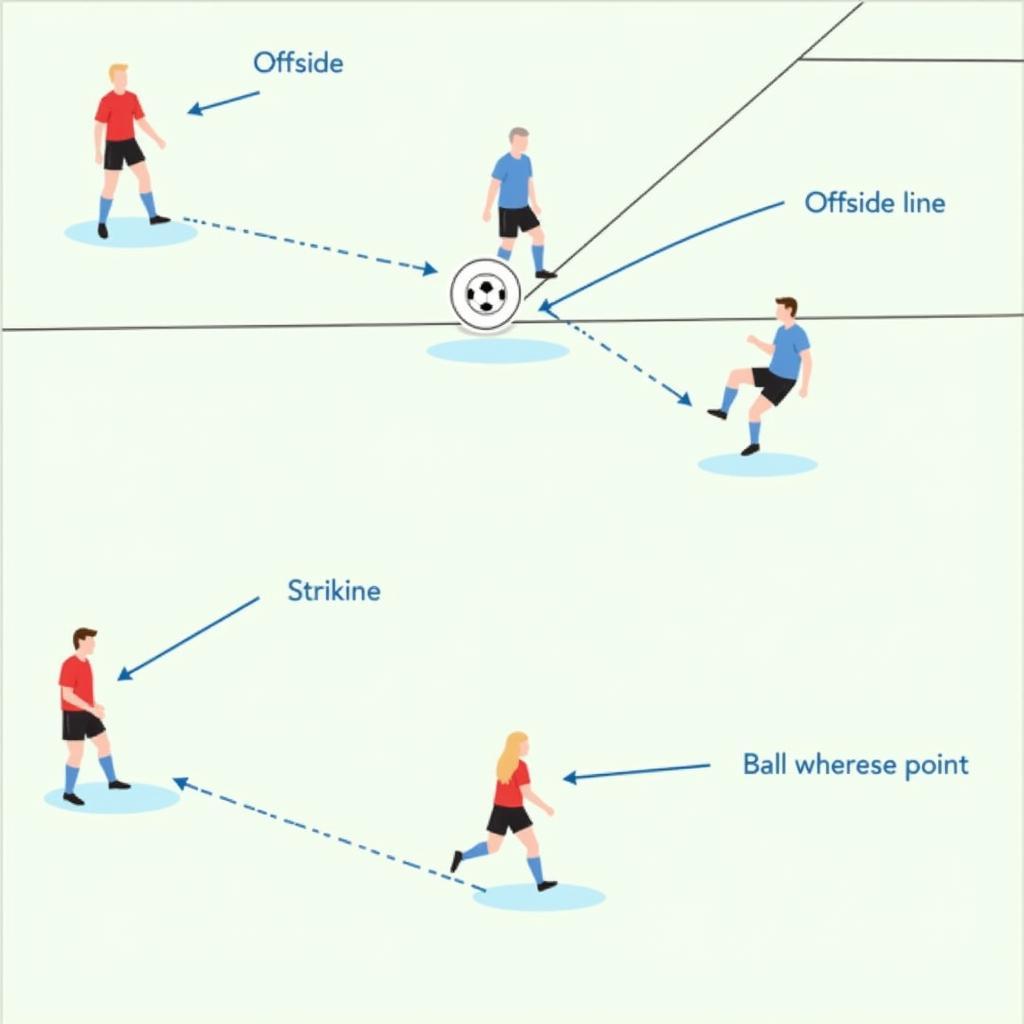Understanding the Offside Position in Football
January 13, 2025The offside rule, a cornerstone of football, is often a source of confusion and debate. This article aims to provide a comprehensive understanding of the offside position, covering its intricacies, interpretations, and its impact on the beautiful game. Let’s dive deep into the world of offsides.
Football, at its core, is about scoring goals. The offside rule exists to prevent attackers from gaining an unfair advantage by simply waiting near the opponent’s goal. It requires a delicate balance of timing, positioning, and awareness. Even for experienced players and referees, interpreting the offside rule can be challenging. This article aims to clarify the rule, discuss common misconceptions, and provide examples to help you fully grasp this essential aspect of football.
Breaking Down the Offside Rule
The offside rule, at its simplest, states that a player is in an offside position if they are nearer to the opponent’s goal line than both the ball and the second-to-last defender when the ball is played to them. There are, however, key nuances to consider:
- Being level: A player is considered onside if they are level with the second-to-last defender (usually the last outfield player).
- Not offside in own half: A player cannot be offside in their own half of the field.
- Interfering with play: Even if a player is in an offside position, they are only penalized if they are deemed to be interfering with play, interfering with an opponent, or gaining an advantage by being in that position.
 Offside Position Example
Offside Position Example
Common Offside Scenarios
Understanding the offside rule in theory is one thing, but applying it to real-game situations can be trickier. Let’s explore some common scenarios:
- Through ball: A classic offside situation occurs when a through ball is played to a striker who has made a run beyond the defenders.
- Deflection: If the ball is deflected off a defender or even an attacker towards an offside player, that player can still be penalized if they are judged to be actively involved in the play.
- Set pieces: Offside can also occur during free kicks and corner kicks. Players must be careful not to stray offside before the ball is played.
Why is the Offside Rule Important?
The offside rule is crucial for maintaining the balance and fairness of the game. Without it, attackers could constantly linger near the opponent’s goal, waiting for a long pass. This would make the game less dynamic and tactical. The offside rule encourages movement, passing, and strategic play, making football the exciting sport we love.
Is the Offside Rule Always Clear-Cut?
Despite the seemingly straightforward definition, the offside rule is often subject to interpretation, especially with the introduction of VAR (Video Assistant Referee). Close calls, often decided by millimeters, can be controversial and lead to heated debates among players, coaches, and fans. However, the ongoing evolution of technology and officiating aims to improve the accuracy and consistency of offside decisions. phở cầu ngang thủ đức is a great place to discuss these controversies!
Conclusion
Understanding the offside position is essential for any football enthusiast. While seemingly complex, by grasping the core principles and considering the nuances of its application, you can develop a more comprehensive understanding of the game. con cầu thủ hồng sơn vietgiaitri would be an interesting article for Vietnamese Football fans. Mastering the offside rule enriches your appreciation of the tactical intricacies and strategic brilliance that define football.
FAQ
- Can a goalkeeper be offside? Yes, a goalkeeper can be offside if they are beyond the second-to-last defender when the ball is played to them.
- Does the offside rule apply at throw-ins? No, the offside rule does not apply to throw-ins.
- What happens if an offside player doesn’t touch the ball? They can still be penalized if they are judged to be interfering with play or an opponent.
- Can an offside player be penalized after a goal is scored? Yes, if the offside player was involved in the play leading up to the goal.
- How is offside determined with VAR? VAR uses camera angles and virtual lines to determine if a player is offside. atlético madrid cầu thủ are particularly good at exploiting the offside trap, so VAR is vital in their matches.
- What is the difference between passive and active offside? A player in an offside position is only penalized if they are actively involved in the play.
- Does the offside rule apply if the ball comes off an opponent? Yes, even if the ball comes off an opponent, the offside rule still applies. cách có cầu thủ vn trong fo3 might be interesting if you want to manage Vietnamese players in a football game. game xây cầu thủ việt could also be something for you to explore.
Need help with offside rules? Contact us at Phone: 0396443476, Email: [email protected] Or visit us at 23 Tháng 3, Đắk Nia, Gia Nghĩa, Đắk Nông, Việt Nam. We have a 24/7 customer service team.